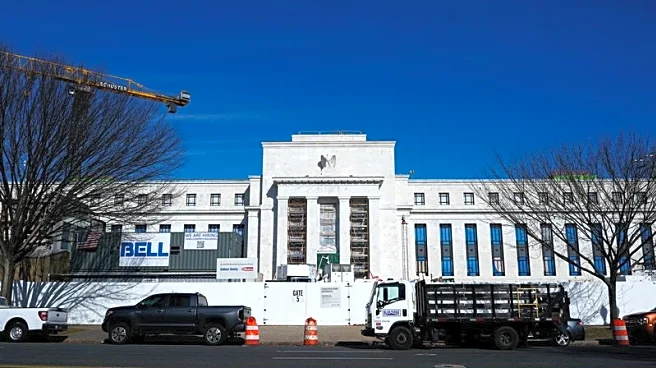What's Happening?
The U.S. Federal Reserve is facing a complex situation as it approaches its December 9-10 policy meeting. Senior officials are divided on whether to implement another interest rate cut, with Boston Fed President
Susan Collins expressing hesitance, while New York Fed President John Williams has suggested there is room for further adjustment. This division comes amid missing key economic data due to a historic government shutdown, which has led to volatile market reactions. The odds of a December rate cut have increased significantly following Williams' comments, sparking rallies in stocks and Treasuries.
Why It's Important?
The potential rate cut is significant as it could influence borrowing costs and economic growth. A cut might provide relief to borrowers and stimulate investment, but it also raises concerns about inflation and financial stability. The Fed's decision will impact various stakeholders, including businesses, investors, and consumers, who are sensitive to changes in interest rates. The division among Fed officials highlights the challenges in balancing inflation control with economic support, especially in the absence of complete economic data.
What's Next?
The upcoming policy meeting will be crucial in determining the Fed's direction. If a rate cut is implemented, it may signal prioritization of labor market concerns over inflation. Conversely, holding rates steady could emphasize caution due to data uncertainty and financial stability risks. The decision will likely depend on the latest economic indicators and internal debates among Fed officials. Stakeholders will be closely monitoring the Fed's actions and statements for guidance on future economic conditions.













